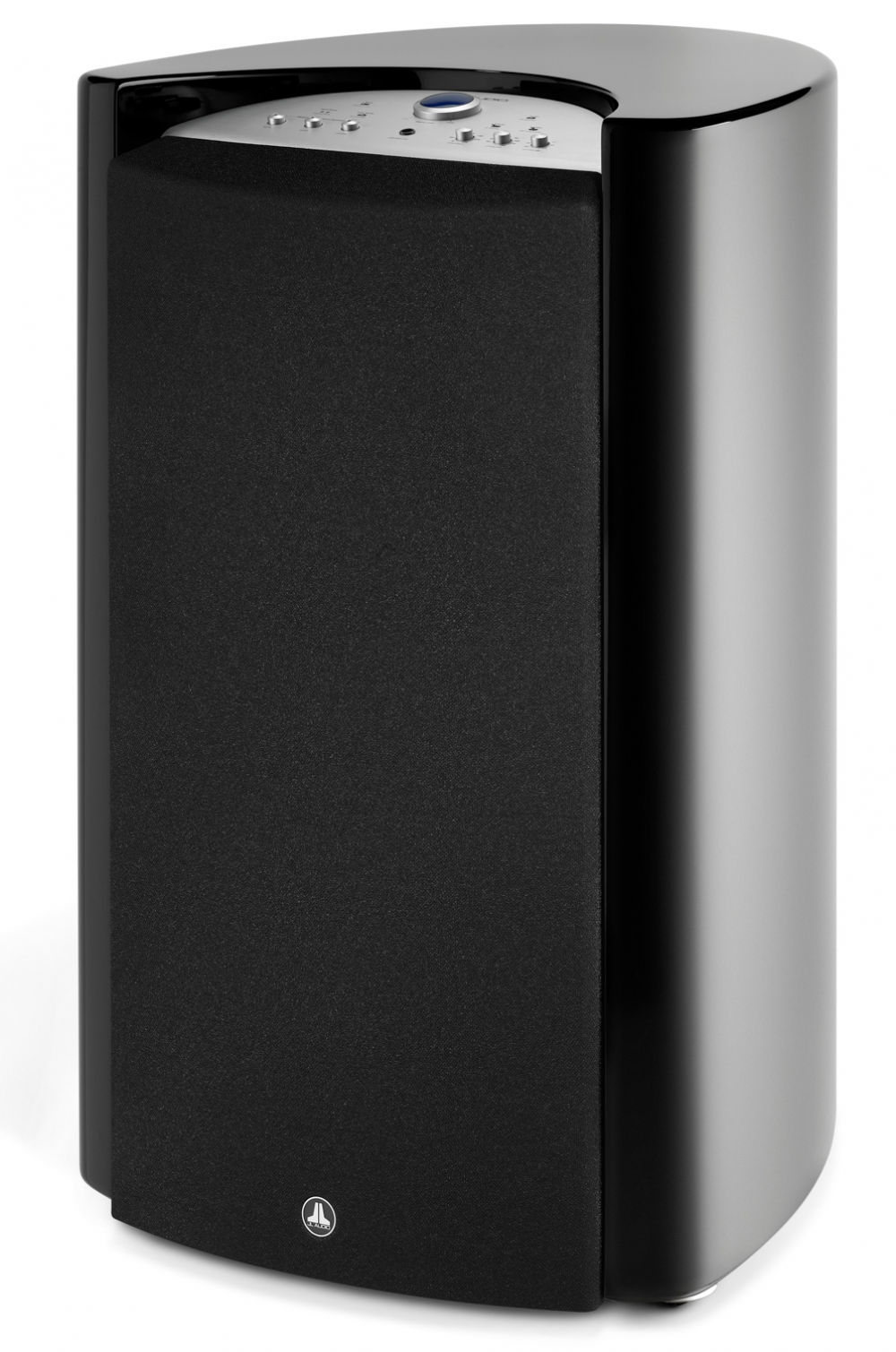
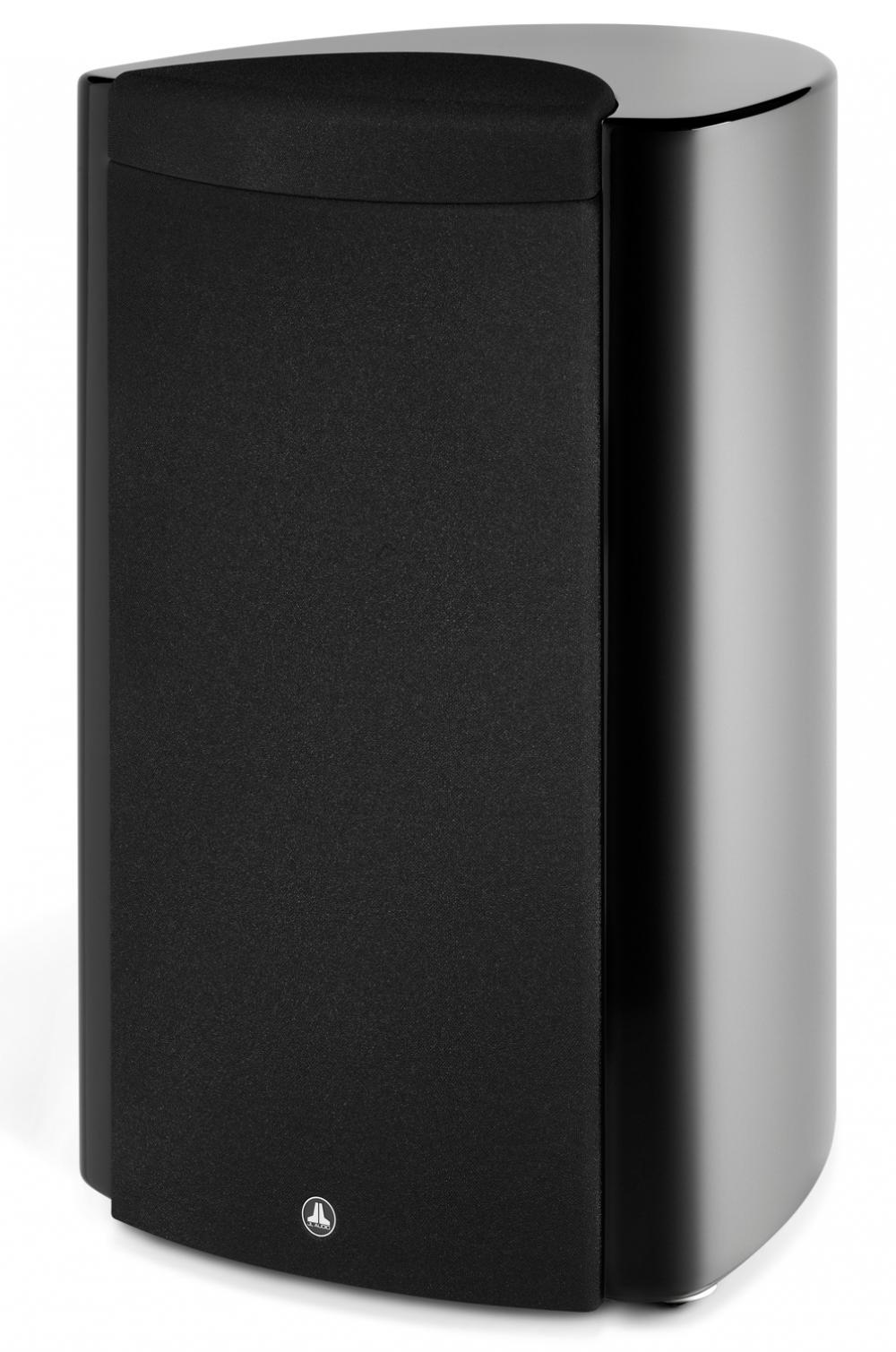

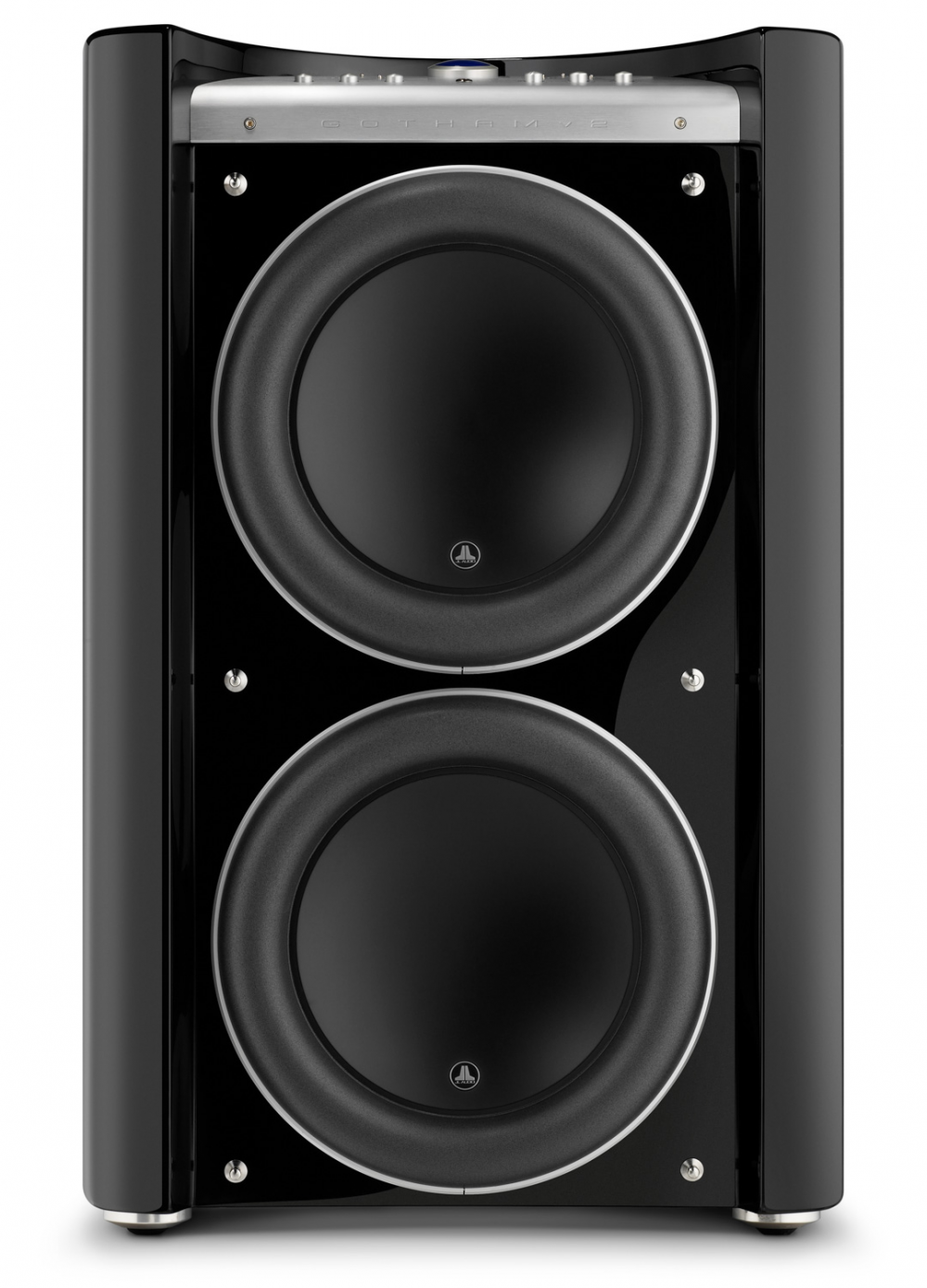
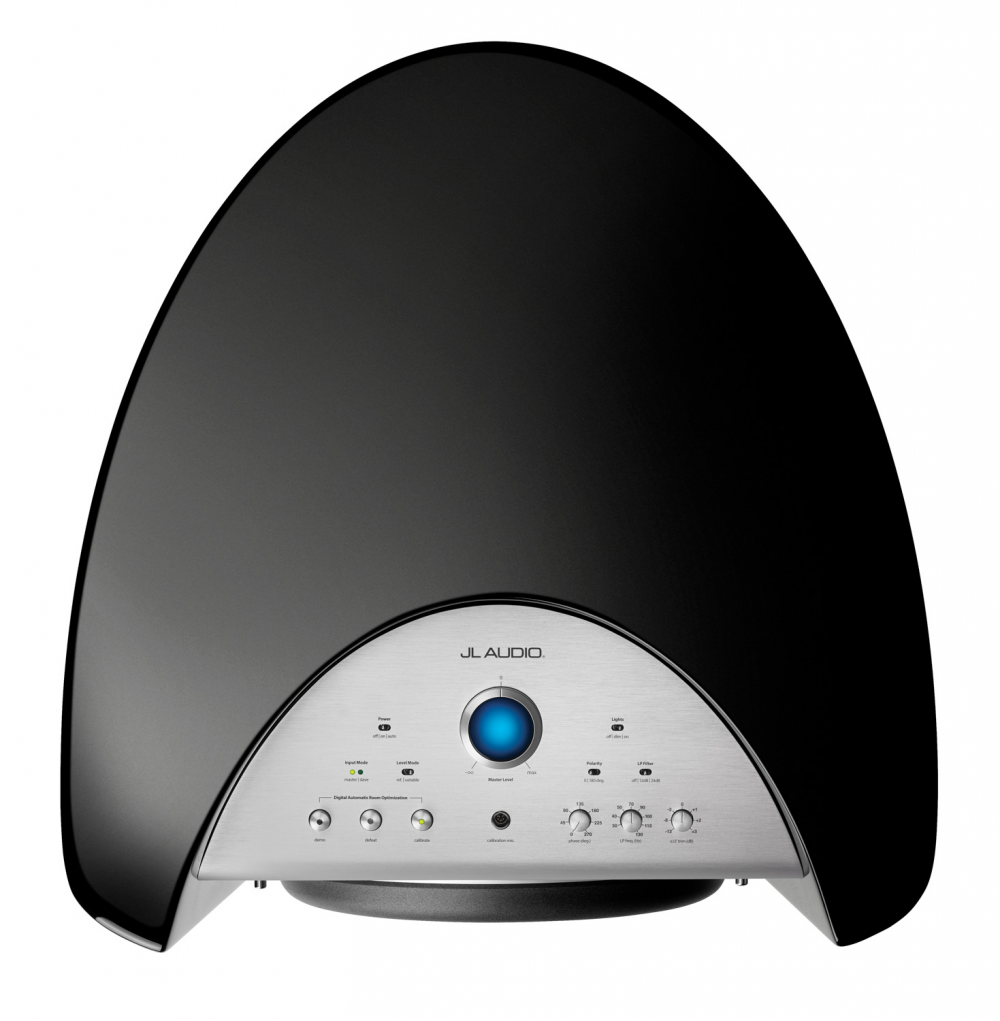
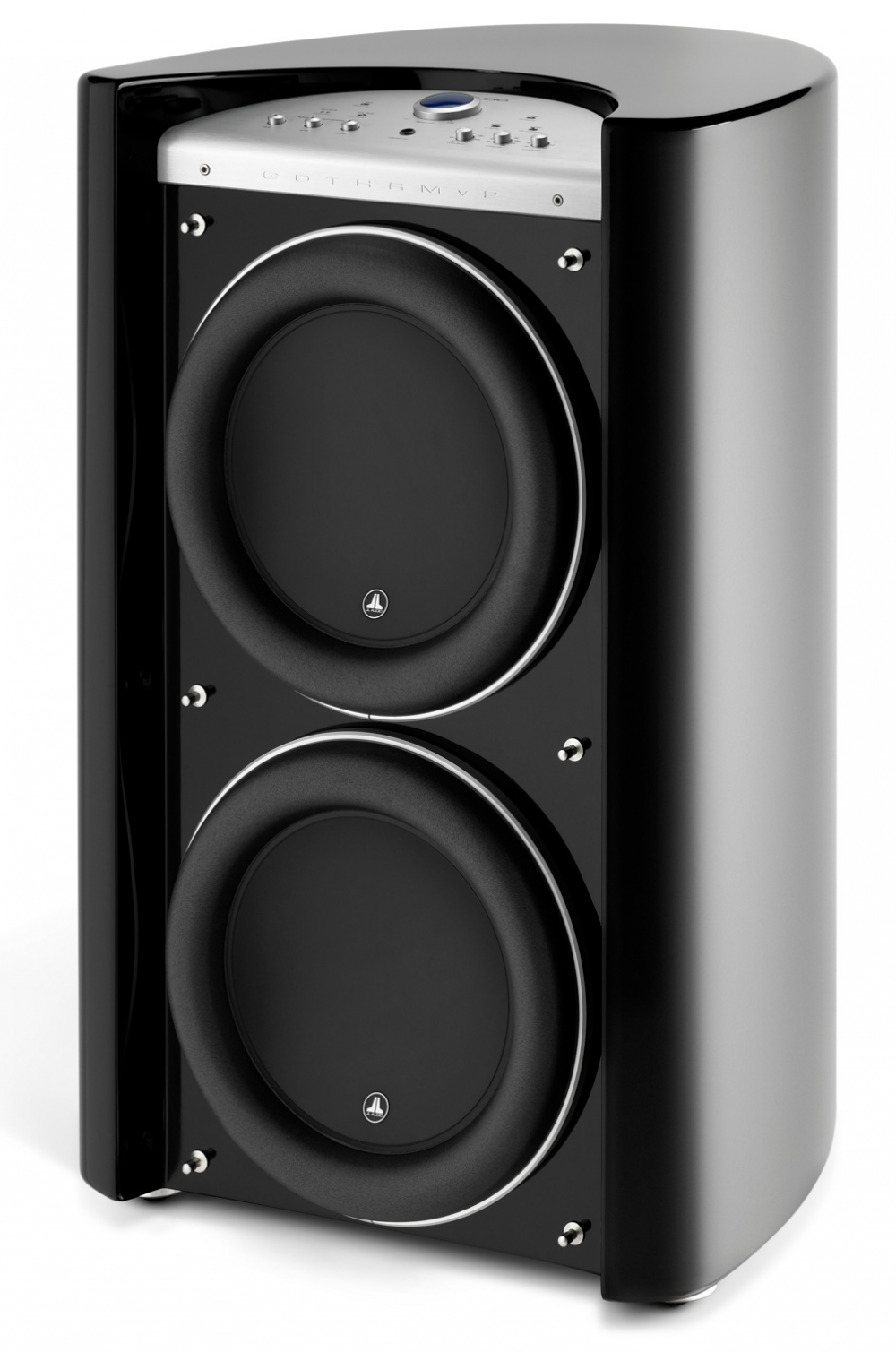
Активный сабвуфер с двумя НЧ-динамиками 13.5'', 4500Ватт
SKU 96240 | Model Gotham v2 G213
купить в магазине





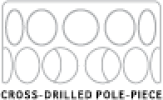

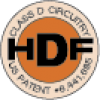

Массивный корпус сабвуфера изготовлен на фабрике в городе Мирамар, штат Флорида, из стекловолоконного композита, закрепленного на внутреннем скелете особой конструкции. Процесс сборки занимает несколько дней, в течение которых требуется соблюдать четкую последовательность множества действий, необходимых для того, чтобы получить акустически инертную структуру. Поверхность каждого сабвуфера вручную покрывается несколькими слоями рояльного лака, дополненных элементами из фрезерованного алюминия и нержавеющей стали, а также защитной решеткой оригинальной конструкции.В сабвуфере Gotham v2 установлены два басовых динамика JL Audio, а приводящий их в движение запатентованный усилитель класса D выдает умопомрачительные 4 500 Ватт чистой мощности. Данное сочетание обеспечивает ход динамика более 10 сантиметров с минимальными искажениями при любом уровне громкости. В сабвуфере также используется новая система DSP, которая включает в себя мощную цифровую систему автоматической калибровки, работающую в 18 частотных полосах и позволяющую идеально интегрировать Gotham v2 в акустические условия вашего помещения.Прослушивание сабвуфера Gotham v2 откроет для вас новое измерение качества звука, настолько впечатляющее, что вы уже больше не сможете с прежним удовольствием слушать другие модели.
- Тип корпуса
- Sealed, with non-parallel walls
- Внешняя отделка
- Black Gloss
- Частотный диапазон (Anechoic)
- 19 - 112 Hz (±1.5dB)
–3 dB at 17.5 Hz / 120 Hz
–10 at 14 Hz / 150 Hz - Объем вытесняемый динамиком
- 773 cu in / 12.7 L
- Рекомендованная мощность усилителя
- 4500 W RMS short-term
- Power Mode(s)
- Off, On or Automatic (Signal-Sensing)
- Режимы подсветки
- Off, On or Dim
- Эффективная площадь диффузора (Sd)
- 214.70 sq in / 0.1386 sq m
- Ширина (W)
- 21.50 in / 546 mm
- Высота (H)
- 34.13 in / 867 mm
- Глубина (D)
- 24.0 in / 610 mm

- Вес
- 360 lb / 163 kg
- Небалансные входы
- Stereo or Mono (two RCA jacks)
- Балансные входы
- Stereo or Mono (two female XLR jacks)
- Входы высокого уровня Speaker/High-Level
- N/A
- Input Grounding
- Isolated or Grounded
- Input Modes
- Master or Slave
- Регулировка уровня
- Reference (fixed gain) or Variable, from full mute to +15dB over reference gain
- Типы фильтров
- Low-Pass
- Крутизна фильтра
- 12/24 dB/octave
- Диапазон регулировки фильтров
- 30 Hz - 130 Hz
- Возможность отключения фильтра
- Yes
- Полярность
- 0 or 180 degrees
- Фаза
- Variable, 0 - 270 degrees
- Регулировка Extreme Low Frequency (E.L.F.)
- Variable, -12 dB to +3 dB at 20 Hz
- Линейные выходы
- N/A
- Линейный выход
- Balanced (one male XLR jack)
- Режим калибровки
- Digital Automatic Room Optimization (D.A.R.O.), incudes laboratory-grade microphone
Digital Automatic Room Optimization (D.A.R.O.)

Digital Automatic Room Optimization (D.A.R.O.)
Summary:
JL Audio's exclusive D.A.R.O. technology uses a powerful on-board DSP to automatically optimize the subwoofer's in-room frequency response. This leads to a superb listening experience, no matter where the subwoofer is placed.
Detailed Information:
In typical listening spaces, subwoofer and listener placement have a profound effect on the accuracy of low-frequency reproduction. While we always recommend that you place your subwoofers in good-sounding locations, we know that these often can be impractical locations. In the real world, subwoofer placement almost always involves a compromise between sonic performance, practicality and aesthetics.
To face this dilemma head on, JL Audio subwoofer systems incorporate a clever piece of technology called Digital Automatic Room Optimization (D.A.R.O.). The D.A.R.O. system self-generates a series of calibration tones, measures the frequency response at the listening position, and automatically configures an 18-band, 1/6 octave equalizer for a flat end-result. The system effectively allows for smooth, well-balanced sub-bass from a variety of locations that would have been less than ideal without D.A.R.O.
To perform this audio magic, all you have to do is:
- Connect the included calibration microphone to the front panel of the subwoofer.
- Press the calibrate button on the front panel of the subwoofer.
- Hold the microphone at the primary listening position for about a minute.
- A few minutes later, you have completed this one-time setup routine.
Read a review of the D.A.R.O. feature on Acoustic Frontiers
Dynamic Motor Analysis (DMA) – динамический анализ для оптимизации магнитной системы громкоговорителя

Dynamic Motor Analysis (DMA) – динамический анализ для оптимизации магнитной системы громкоговорителя
Суть вопроса:
Система Dynamic Motor Analysis (DMA) представляет собой мощное программное обеспечение, моделирующее электромагнитные процессы по методу конечных элементов (Finite Element Analysis – FEA) разработанное и впервые представленное JL Audio в 1997, чтобы научно решить проблему линейности динамиков. Использование усовершенствованной с годами системы DMA при проектировании динамиков позволяет значительно снизить искажения и улучшить переходные характеристики… или, проще говоря, получить плотный, неискажённый артикулированный бас.
Подробная информация:
Начиная с 1997 года JL Audio является лидирующей компанией, разрабатывающей элементы подвеса и магнитной системы динамиков с использованием моделирования по методу конечных элементов. Целью этих исследований является расшифровка “геномома громкоговорителя”, понимание и оценка его реального поведения в движении при подаче на динамик реального сигнала определённой мощности. Основным компонентом этой интегрированной системы моделирования является DMA (Dynamic Motor Analysis). Начиная с модели 15W3 и сабвуферов серии W7 в конце 1990-х и начале 2000 х годов, анализ DMA сыграл важную роль в формировании дизайна всех громкоговорителей JL Audio, включая наши компонентные акустические системы.
DMA – это система анализа на основе метода конечных элементов (Finite Element Analysis – FEA), это означает, что она берёт большую комплексную задачу, разбивает ее на небольшие элементы для анализа, а затем собирает данные для формирования “общей картины” точного решения. Технологический прорыв DMA заключается в том, что он фактически учитывает взаимное влияние подводимого к катушке мощного сигнала и положение катушки/диффузора динамика в рамках анализа во временной области. Это дает нам очень точную модель фактического поведения динамика при подаче на него сигнала с реальной мощностью, чего не могут сделать традиционный метод Тиля-Смолла или другие измерения параметров на низкой мощности. Поскольку DMA анализирует не стационарную модель, можно изменять параметры схемы в поисках оптимальных параметров. Процесс моделирования происходит в течение длительного периода времени для каждого динамика.
DMA способен анализировать реальные эффекты колебания мощности и при перемещении катушки относительно магнитной системы динамика, в частности динамические изменения “фиксированного” магнитного поля. Это дает чрезвычайно ценную информацию по сравнению с традиционным моделированием, которое для простоты расчета предполагает, что так называемое “фиксированное” магнитное поле, создаваемое в зазоре звуковой катушки неизменно. DMA не только показывает, что это “фиксированное” поле на самом деле изменяется из-за влияния магнитного поля, создаваемого током, протекающим через звуковую катушку, но и помогает нашим инженерам найти решения, которые минимизируют эту нестабильность. Анализ этого поведения имеет решающее значение для понимания механизмов возникновения нелинейных искажений в моторе динамика и проливает свет на аспекты конструкции магнитной системы, которые определяют его линейность:
- Линейность силы магнитной системы в рабочем диапазоне перемещения подвижной системы громкоговорителя
- Постоянство силы магнитной системы с обоими величинами тока проходящего через звуковую катушку – положительной и отрицательной
- Постоянство сила магнитной системы при различных уровнях мощности подводимого сигнала
Применение системы DMA позволяет нашим инженерам электроакустикам вносить критические изменения в конструкцию и создавать динамики с линейными и высокостабильными магнитными системами.
Любой динамик произведенный компанией JL Audio обладает пониженным уровнем искажений, улучшенными переходными характеристиками и превосходным качеством звучания.
W-Cone – W-диффузор громкоговорителя (защищено патентом U.S. #6,496,590)

Суть вопроса:
W-Cone - это конструкция узла диффузора и технология его сборки, которые обеспечивают сочетание его небольшой массы и необычайной жесткости. Форма элементов диффузора также определяет его исключительную жесткость на скручивание, которая критична для правильного расположения катушки в крайних положениях хода динамика.
Подробная информация:
Чем больше сила магнитного поля и ход подвижной системы динамика, тем важнее становится жесткость диффузора. Силы ускорения экстремальны, требуется, чтобы диффузор выдерживал перегрузки и быстрые изменения направления движения без деформации. Деформация не только приводит к искажениям, но также может влиять на механическую целостность динамика, позволяя звуковой катушке выйти из рабочего положения и механически контактировать с верхним фланцем и полюсным наконечником магнита.
Существует несколько подходов к повышению жесткости диффузора. Самые очевидные – использование более толстого и/или более жёсткого материала. В последние годы несколько производителей использовали композитные (на основе Kevlar®, стекловолокна и т.д.), или металлические (алюминий, магний, титановые сплавы) материалы диффузора. Использование этих экзотических материалов обычно сопровождается маркетинговыми утверждениями о том, что выбранный материал обладает исключительными характеристиками соотношения жесткости по отношению к массе. Эти утверждения истинны, но они могут вводить в заблуждение. В то время как сами по себе эти материалы обладают отличными характеристиками соотношения жесткости по отношению к массе (по сравнению с целлюлозой или полипропиленом), на практике диффузоры из этих материалов не легче диффузоров из целлюлозы или полипропилена. Это означает, что их использование допускает компромиcс, который приводит к увеличению массы подвижной системы в конструкции. Плата за этот компромисс – снижение эффективности и усложнение подвеса (поскольку сложнее удерживать более тяжелый диффузор в нужном положении).
Классический диффузор из полипропилена обладает достаточной жесткостью для конструкций с меньшей мощностью, но его жёсткости недостаточно для требований предъявляемой к конструкции сабвуфера серии W7. Наша команда инженеров сконцентрировалась на разработке очень жёсткого диффузора, но при этом без значительного увеличения его массы. Эти усилия в конечном итоге привели к появлению дизайна, который мы называем W-Cone. Жесткость узла диффузора W-Cone достигается с помощью архитектурных методов расчета прочности, а не за счет применения
изначально жестких материалов. В основе конструкции диффузора W-Cone две легкие полипропиленовые детали с минеральным наполнением, которые соединяются вместе по периметру и в центре сборки. Нижняя деталь в сечении имеет форму буквы “W”, отсюда и название, и обеспечивает невероятную жесткость при соединении с верхней частью. Эффект примерно такой же как при сборке отдельных ферм моста или сварке отдельных кузовных элементов современного автомобиля в единую прочную структуру. В дополнение к увеличению общей жесткости, нижний элемент конструкции распределяет силу, создаваемую звуковой катушкой и магнитной системой, более равномерно, чем в случае классического диффузора. Сила прилагается не только к вершине конуса, но также распределена по периметру внешней диафрагмы для более линейного поведения. Еще одним преимуществом W-Cone является то, что непосредственно излучающая поверхность диффузора (которая контактирует со средой прослушивания) изолирована от непосредственного влияния высокого давления воздуха с обратной стороны диффузора, что дополнительно уменьшает её деформацию (и, следовательно, и искажения).
Для сравнения: W-Cone диффузор сабвуфера 12W7 на 32% легче обычного 12-дюймового диффузора из алюминиевого сплава. Если проанализировать с точки зрения веса на квадратный дюйм площади диффузора, у сабвуферов серии W7 он весит 1,24 г / кв. дюйм, по сравнению с 1,45 г / кв. дюйм для диффузора из алюминиевого сплава и 1,66 г / кв. дюйм для диффузора из титанового сплава.
Так почему полипропилен? Как указано выше, наша запатентованная технология W-Cone обеспечивает все преимущества более экзотических материалов, в то же время свойства полипропилена имеют ряд преимуществ с учетом уникальной конструкции сабвуферов серии W7. Поскольку внешний подвес сабвуферов W7 является съемным, подвижная система (включая диффузор) может подвергаться
механическим воздействиям, которые не встречаются в обычных конструкциях. Диффузор должен быть устойчив к деформациям и повреждениям, поскольку пользователь может перекосить его при манипуляциях с подвесом, которые необходимы для физического крепления сабвуфера W7 к корпусу. Целлюлозные, металлические или хрупкие композитные диффузоры не соответствуют этим повышенным требованиям. Диффузор из полипропилена, выполненный по технологии W-Cone, имеет превосходную осевую и торсионную жёсткость (на скручивание) и выдержит любые нагрузки.
Elevated Frame Cooling (U.S. Patent #6,219,431 & #6,229,902)

Elevated Frame Cooling (U.S. Patent #6,219,431 & #6,229,902)
Summary:
JL Audio's patented Elevated Frame Cooling design delivers cool air through slots directly above the top-plate to the voice coil of the speaker. This not only enhances power handling, but also sound quality by minimizing dynamic parameter shifts and power compression.
Detailed Information:
Many speakers employ venting techniques to enhance voice coil cooling. This is typically accomplished by having big holes in the sides of the frame just below the spider attachment shelf. While it provides a modest cooling benefit, this low-velocity air-flow does not blow directly or strongly on the voice coil.
Our patented design improves upon this cooling technique in a number of ways. By elevating the frame above the top-plate of the motor (via stand-offs integrated into the bottom of the frame) a narrow, high-velocity air-path is created between the bottom surface of the frame and the top surface of the top-plate. This air path leads directly to the voice coil and then turns upward into the spider air cavity. By utilizing the pumping action of the spider through this focused air path, a large volume of cool air hits the coil windings directly.
Another important benefit is that the upper surface of the top-plate (one of the speaker's hottest parts) is directly exposed to cooling air flow, whereas on a conventional design it is isolated from the air flow by the lower flange of the frame. The elevated frame technology greatly increases thermal power handling, reduces compression effects and does so without any additional parts.
Floating Cone Attach Method - FCAM™ (U.S. Patent #6,501,844)

Floating Cone Attach Method - FCAM™ (U.S. Patent #6,501,844)
Summary:
This assembly technique, conceived by JL Audio, ensures proper surround geometry in the assembled speaker for better excursion control and dynamic voice coil alignment.
Detailed Information:
JL Audio's patented FCAM™ technology is an innovative method of bonding the surround/cone assembly to the voice coil former/spider assembly. This feature helps ensure concentricity of the surround, spider and voice coil without torquing the suspension to achieve it. This allows for the inevitable, slight variations in production part dimensions without having them negatively impact the integrity of the suspension and coil-centering at high excursions.
OverRoll™ Surround (U.S. Patent #5,687,247 & #5,949,898)

OverRoll™ Surround (U.S. Patent #5,687,247 & #5,949,898)
Summary:
By utilizing space wasted in conventional speakers, this ground-breaking innovation controls the W7's massive excursion without sacrificing precious cone area.
Detailed Information:
One of the first things you notice about a W7 is that something is "missing"... the mounting flange. Of course, this is actually not the case. The mounting flange is simply hidden beneath the surround and is made accessible for mounting purposes by detaching the outer edge of the surround and moving the roll to the inside (a pretty neat little trick). Apart from the obvious benefits of amazing your friends as you pull the surround off your speaker, there is a serious technical issue that led us in this design direction: Effective Piston Area ("Sd"). This is essentially the speaker's "cylinder bore", to use an automotive engine analogy, and is calculated by measuring the diameter of the diaphragm including one-half of the surround roll-width. In other words, from the top-center of the surround on one side to top-center of the surround on the other side.
The displacement capability of a speaker is determined by this piston area times the speaker's excursion capability. Displacement of air is directly linked to output potential. Therefore, the more air a speaker can ultimately displace, the louder it can play. That being said, there is a big difference between piston area and excursion: piston area doesn't need power to make it happen. This means that by making a larger piston, you are directly improving displacement for a given amount of excursion and, therefore, making your speaker more efficient. This is not the only factor that governs efficiency, but it is a major one.
To make a speaker have more excursion capability not only requires a motor design that can deliver more stroke, but also requires a surround rugged enough to handle the demands of longer excursions and controlled enough to keep everything lined up properly. If the surround's roll-width is not adequately large, its behavior (compliance) is not linear over the useful stroke of the woofer and it is more likely to fatigue and fail. For this reason, speakers with longer excursion capability generally need larger surround rolls (we won't comment on the ones that use large rolls strictly for cosmetic effect).
The problem with big surrounds is that they begin to encroach on the effective piston area of the driver. For example, a typical 12-inch woofer with a medium-sized roll has an effective piston area of 81.52 square inches. Compare this to a fat-surround 12-inch woofer which has a piston area of 69.07 square inches (15.2 % less effective piston area than the medium-size roll.) To overcome this loss, the fat-surround woofer has to produce more excursion to displace the same air as the woofer with the medium surround (and will require more power to do so).
OverRoll™ technology neatly sidesteps this compromise by allowing us to make full use of the entire footprint of the speaker, placing the surround further to the outside than in a conventional woofer. This means that we can use a large roll for all its benefits without sacrificing cone area (in fact, the 12W7 has 1% more piston area than the medium-surround conventional woofer). By maximizing the effective piston/total footprint ratio, we can deliver more output for a given excursion and outside frame diameter. This means that the prodigious excursion advantage of the W7 can be put to full use enhancing output, rather than making up for lost piston area.
The technology also provides a geometry advantage on the outside edge of the surround roll, allowing for more linear operation. A further benefit is that the mounting holes are inherently sealed by the surround, resulting in an improved box seal.
Radially Cross-Drilled Pole-Piece (U.S. Patent #6,243,479)

Radially Cross-Drilled Pole-Piece (U.S. Patent #6,243,479)
Summary:
This innovative venting system greatly enhances thermal dissipation and power handling by directing air flow onto the voice coil former, working in conjunction with the Elevated Frame cooling technology to effectively remove heat from the voice coil. This improves power handling and reduces power compression effects, leading to more linear performance.
Detailed Information:
This technology differs from a conventionally vented pole-piece in that the air flow is capped off at the top of the pole-piece and directed through machined holes on the outer wall of the pole-piece to the region directly behind the voice coil. The top portion of the pole-piece is smaller in outside diameter where the holes vent and helps create a high-volume, high-velocity airflow path between the inner-coil cavity and the ambient air of the enclosure.This helps remove super-heated air that is trapped between the coil former and pole-piece on a conventional design, leading to a dramatic improvement in cooling efficiency, especially at high excursions.
Engineered Lead-Wire System (U.S. Patent #7,356,157)

Engineered Lead-Wire System (U.S. Patent #7,356,157)
Summary:
Carefully engineered lead-wire design and attachments ensure controlled, quiet lead-wire behavior under the most extreme excursion demands.
Detailed Information:
Managing the lead-wires on a long-excursion woofer is one of the trickier aspects of its mechanical design. To address this, many long-excursion woofers today rely on a simple solution that weaves the lead-wires into the spider (rear suspension) of the driver.
The biggest problem with this approach is that spider limiting behavior plays a hugely important role a woofer's performance. Lead-wires that are attached or woven into the spider material can alter the spider's "stretching" behavior. The tinsel wire naturally has less 'give' than the fabric material of the spider leading to asymmetrical spider behavior and non-uniform stress distribution around the spider circumference. The wire attachment points can also cause localized pulling and tearing forces at the spider's excursion limits. As such, longevity becomes a major concern and makes the woven-in design less than ideal for very long-excursion designs.
While a traditional 'flying lead' design does not compromise spider linearity or radial stability, it creates its own challenges on a long-excursion woofer. Managing the 'whipping' behavior of the wire and making sure it does not contact the cone or spider is one challenge. Another is ensuring that the leads do not short one another or the frame of the woofer.
To overcome these issues, JL Audio's engineered flying lead-wires work in conjunction with carefully engineered entry and exit support structures molded into the terminals and the voice coil collar. Some models also feature jacketed lead-wires to further reduce the likelihood of shorting and fatigue. The result is flawless high-excursion lead-wire behavior, with outstanding reliability and none of the compromises inherent to a woven-in lead wire system. Building woofers this way requires much more labor and parts complexity than the simpler woven-in approach, but the payoff is in reduced distortion, reduced mechanical noise and improved reliability.
High-Damping Feedback Circuitry (U.S. Patent #6,441,685)

High-Damping Feedback Circuitry (U.S. Patent #6,441,685)
Summary:
This proprietary, discrete control circuit design allows our Class D switching amplifiers to maintin an excellent damping factor for improved transient behavior and fidelity.
Detailed Information:
While Class D amplifiers are well known for outstanding efficiency, they have also been known for less than spectacular sound quality due to weak damping of the driven load and poor power regulation. These factors are critical to subwoofer fidelity as they relate directly to the amplifier's ability to control the motion of the speakers.
JL Audio's Patented Class D output circuit utilizes a discrete control section and a unique feedback loop design that results in outstanding power regulation with a damping factor that's vastly higher than other Class D designs and also higher than most Class A/B amplifiers. The benefit of this exclusive JL Audio technology is tight, clean bass reproduction with the efficiency advantage of Class D.
It is a package tailor-made for world-class bass performance.
Precision Built in U.S.A.

Precision Built in U.S.A.
Summary:
JL Audio's Miramar, Florida loudspeaker production facility is one of the most advanced in the world.
Detailed Information:
At a time when most audio products are built overseas, JL Audio’s commitment to in-house loudspeaker production continues to grow. All W7’s, W6’s, TW5’s, TW3's, TW1's, W3v3’s and some of our ZR products. We also build our Marine Speaker Systems, Home Subwoofers, Stealthbox® products and the vast majority of our enclosed subwoofer systems in Florida.
To pull this off in a competitive world market, our production engineering team has created one of the world’s most advanced loudspeaker assembly facilities. This commitment to state-of-the-art technology allows our highly skilled workforce to efficiently build JL Audio products to extremely high quality standards.
While it is also feasible to build good quality products overseas (and we do build some of our products in Europe and Asia), it can be challenging when the product’s technology is innovative or complex. Since most of our premium loudspeakers incorporate proprietary, patented technologies requiring specific assembly techniques, we prefer that the people who design them have close access to the people manufacturing them.